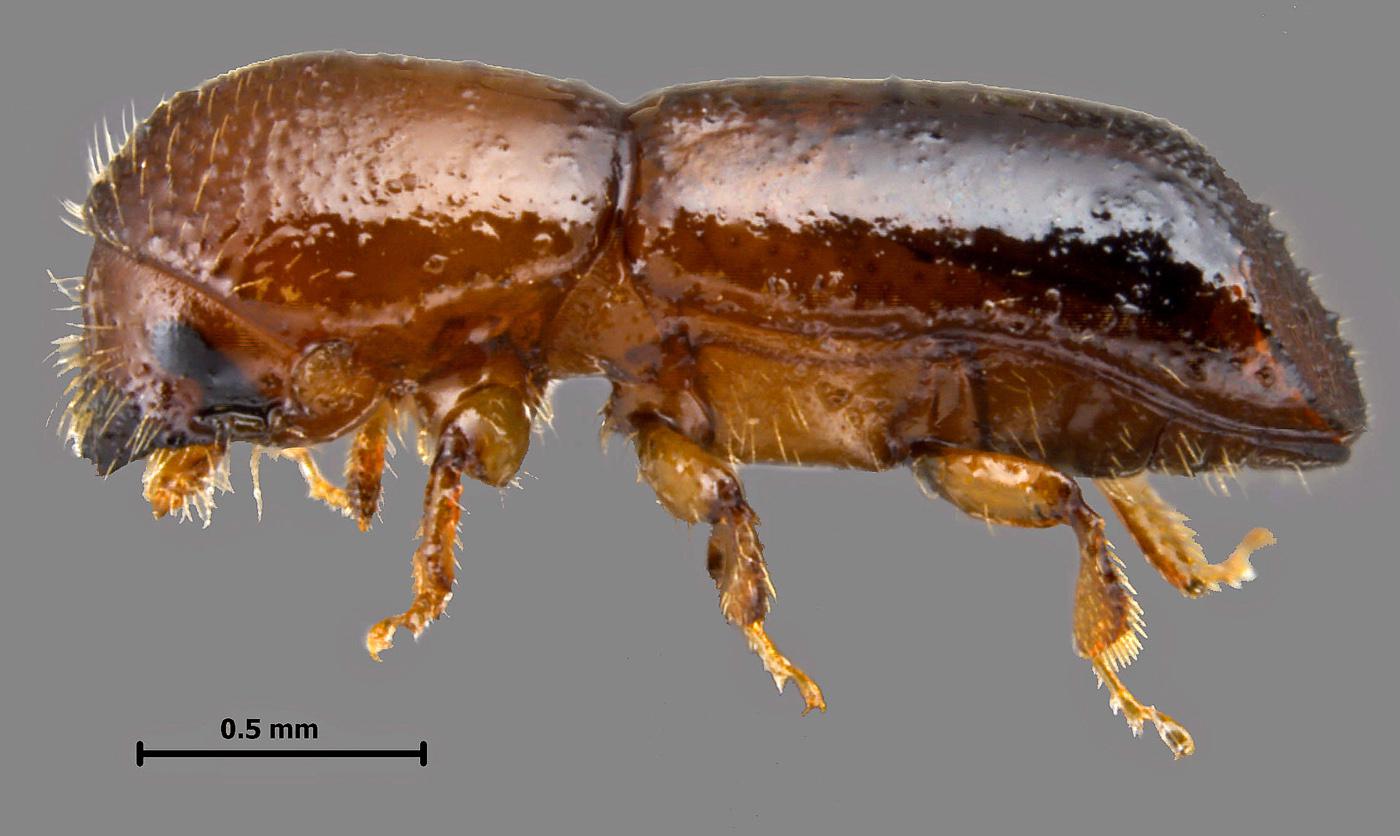Information Possibly Outdated
The information presented on this page was originally released on December 10, 2009. It may not be outdated, but please search our site for more current information. If you plan to quote or reference this information in a publication, please check with the Extension specialist or author before proceeding.
Small, introduced beetle is threatening state trees
MISSISSIPPI STATE – A beetle that made its presence known in Mississippi this summer is threatening the extinction of redbay trees in the state and could harm the future of traditional Cajun cuisine.
The beetle is the redbay ambrosia beetle, a dark brown insect about half the size of an uncooked grain of rice. It spreads the pathogen that causes Laurel wilt disease in many tree species, including Mississippi’s redbay and sassafras trees. Redbay leaves and file’, which is made from sassafras leaves, are used commonly as spices in Cajun dishes such as gumbo.
John Riggins, a Mississippi Agricultural and Forestry Experiment Station forest entomologist, was the first to identify this beetle in Mississippi. Riggins, who is with Mississippi State University’s Department of Entomology and Plant Pathology, found it in redbay trees in the Sandhill Crane Refuge near Gautier in Jackson County. This location on the Mississippi Gulf Coast, identified in July, is 300 miles from the nearest known location in Georgia.
“It only takes one beetle to penetrate the bark of a redbay tree, and that is enough to inoculate the tree and kill it in less than one growing season,” Riggins said.
The beetle and the fungus were both introduced to the United States from their native range in Asia. Since 2002, they have been a problem on the Atlantic seaboard in Florida, Georgia and South Carolina.
“This beetle is not a major problem in Asia,” Riggins said. “The trees in Asia have a natural resistance to the fungus and the beetles have natural enemies.”
There are chemical insecticides that can be used against the beetle and fungicides that can help prevent the disease in trees, but Riggins said these are too expensive and impractical to consider on a large scale. Efforts are being focused on preventing the spread of the beetle and finding out where the infestation came from.
“We’re conducting research to try to find out how it got into Mississippi so we can try to stop a future problem,” Riggins said. “We’ve also been monitoring the beetle and the disease and trying to describe the extent of the infestation. Our future plans are to use remote sensing to do forest change detection and trace this infestation back to where it began.”
Riggins’ lab at MSU is monitoring the problem and trapping the beetles to identify their numbers and locations. Researchers will soon do genetic analysis to compare the Mississippi beetles with those found on the East Coast.
“We want to determine if our population of beetles is more related to those on the Atlantic coast or those in Asia,” Riggins said.
This information may indicate whether these beetles came to Mississippi on a load of firewood from an infested state or on a shipping crate through the Gulfport or Mobile ports near where the beetles have been detected.
Randy Chapin, forest health coordinator with the Mississippi Forestry Commission, said MSU received an initial $5,000 grant through the U.S. Forest Service to investigate the beetle problem when it was first reported. The money came through the Cooperative Forest Health Funding, and with it, Riggins was able to document the presence of the redbay ambrosia beetle.
Based on Riggins’ initial reports of the problem, the U.S. Forest Service gave MSU another $25,000 for further study.
“The biggest thing we want to know right now is how it got here,” Chapin said. “It is definitely high on the Forest Service radar.”
To date in Mississippi, only redbay trees are being killed by this beetle, but several other state tree varieties, including sassafras, are susceptible.
Redbay trees are a common understory component of Mississippi’s coastal forests. They are an important food source for many different species of birds and mammals, which eat the small fruits that the redbay trees produce. Redbays are not an economically important species, but they are sometimes used in cabinet making and woodturning because of their attractive wood grain and coloration.
Chapin said Georgia has not been able to stop the spread of the beetles and the disease, although they have tried cut and burn practices, buffer strips and insecticides. A few trees in Georgia have escaped the infestation and appear resistant to the beetle, and these are being examined for possible natural immunity.
In the meantime, Mississippians are being urged to use local sources of firewood. Landowners with dead or dying redbay or sassafras trees are asked to contact the Mississippi Forestry Commission so they can investigate the cause.



